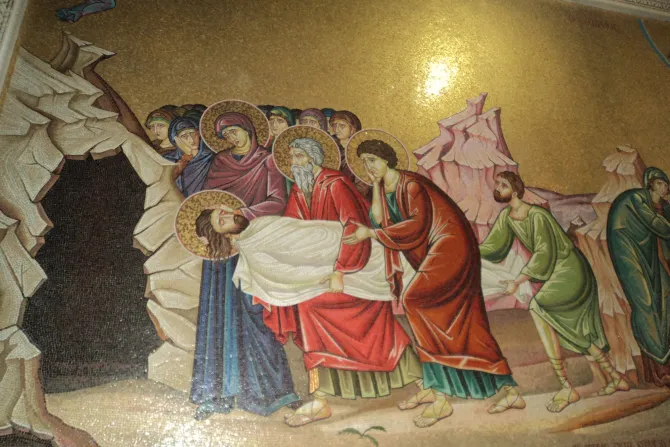Jerusalem, Nov 30, 2017 / 10:33 am
Following the recent restoration of the Holy Sepulchre, archaeologists have confirmed the construction dates of the structure surrounding what is believed to be the tomb of Jesus.
Having undergone renovations in 2016, the tomb was opened for first time in centuries last October. Archeologists were able to test samples of the mortar near the cave's southern wall and the entrance, according to National Geographic. The sediment in the samples was was measured for its most recent exposure to light using a process called optically stimulated luminescence.
They found that the mortar and marble slab covering the original burial bed dated back to about 345 AD. This coincides with the time period that Constantine was believed to have built the shrine around the tomb, and refutes claims by many researchers that the shrine was built only 1,000 years ago, during the Crusades.
Veneration of Christ's burial place dates back to the fourth century, when St. Helena is believed to have discovered and identified the tomb. St. Helena's son, Emperor Constantine, is believed to have built the Church of the Holy Sepulchre in 326 and enshrined the tomb.
The shelf on which Christ's body was laid is the central point of veneration, which has been encapsulated by a 3-by-5 foot marble structure - the Edicule - since at least 1555.
Since its construction, the church has been built and rebuilt several times, repairing destruction caused by fires, earthquakes, and religious conflicts.
A year-long restoration of the site was recently completed, and scientists are looking into additional restoration work on the foundation.
Scientists also found that in between the burial bed and the most recent marble covering was a broken slab marked by a cross and words "burial tomb," belonging to the original shrine.
The tests performed on the tomb samples also provided evidence for the historical restorations of the Crusades and the 16th century Franciscans.


